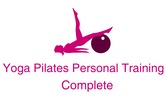|
What is so special about breathing – everybody does it naturally and most of our breathing is done involuntarily. So ... why do I talk about it & ask you to practice it at the beginning and end of Yoga or at the beginning or Pilates? Typically, in the West, our breath pattern is quite restricted. We tend to have a shallow breath that only takes the air into the middle to upper third of the lungs. Keeping our ribs and tummy areas fairly flat but sometimes allowing our shoulders to rise and fall with the breath. This kind of breath doesn't provide us with lots of oxygen, makes us stressed and tired as the body is tense. Notice how you are breathing now – are your shoulders moving, is your tummy moving – where do you feel the breath in your chest area? Are you breathing through your mouth or your nose? Try to breath through your nose as much as possible - it's why it's there! Breathing patterns can be in our sympathetic nervous system (fight or flight, anxious, stressed) where we breath into just the top region of our lungs (often inhaling through the mouth), or our parasympathetic nervous system (down regulated, relaxed) where we breath into the lower region of our lungs. Breathing patterns or exercises in yoga are known as Pranayama. The breath patterns below promote relaxation because as the lungs expand on the inhalation the vagus nerve is stimulated, which slows the heart and breath rates down. The vagus nerve runs from the brain to below the chest, into our lower body. The breathing should be relaxed, if you find the breath becoming forced, ragged or you feel dizzy, just come back to a gentle relaxed breath. Taking the breath through our nose also releases a gas called Nitric Oxide which helps to clean the breath, it also allows the blood vessels to relax & by breathing through our nose the air tends to go deeper into the lungs where there are more blood vessels, allowing for greater take up or oxygen. By relaxing and taking the breath, via our nose, down into the lower lobes of our lungs we are doing diaphragmatic rib cage breathing. Our diaphragm is doing the job the it is designed for. As you inhale through the nose the diaphragm muscles contract pulling the centre of the diaphragm down, which pushes the contents of your lower abdomen down and out slightly, massaging our internal organs & relaxing our pelvic floor down. This allows your lungs to stretch and to fill up with air. Exhaling, through the nose, the diaphragm relaxes and the centre of it moves back up, pushing the air back out of the lungs, our internal organs move back to place & or pelvic floor engages as it rises up. The breath rate becomes slower and calming. You can experience this breath by standing, sitting or lying down with your hands placed gently on your lower ribs, thumbs around your back. As you inhale, you should feel a 360° expansion. You might only feel a centimetre or so of movement. Your shoulders shouldn't rise with your inhale. Allow your exhale to become 1.5 to 2 times slower than your inhale to help activate your parasympathetic nervous system. 3 part breath – this breath incorporates the diaphragmatic rib cage breathing as above, but also brings in full breath. We start by inhaling through the nose, think about breathing down into the bottom third of your lungs, then inhale again into your ribcage, then finally inhale again to the top of lungs. Exhaling back out through the nose, we go in reverse order, so the air is expelled from the top of the lungs, then from the chest area and finally from the bottom of the lungs You shouldn't feel like you are about to burst, you should feel comfortably full. This breath utilises the whole of the lungs, enhances your self-awareness and is calming. The exhalation should be longer than the inhalation. This breath mobilises your ribcage, stretches the muscles between your ribs (intercostals) and energises you. Diaphragmatic rib cage breathing can also be known as lateral thoracic breathing (If you have taken my Pilates classes we do it standing at the beginning), except in yoga the inhalation and exhalation are both through the nose, I cue to exhale through the mouth in Pilates as it engages your core a bit more. Try it - can you feel the difference when you exhale through your moth or nose? With practice, this kind of breath can help you to deepen your inhalation and strengthen your diaphragm. If you are looking to improve your breathing - whether just to change your current breathing habit, to improve your pelvic floor or to improve your running why not try out a Hypopressive session with me? Here is a link to a really good YouTube video on breathing clips by Core Exercise Solutions, Dr Sarah Ellis Duvall, PT, DPT, CPT. https://youtu.be/AKNCwuNaPyE Categories All
0 Comments
Leave a Reply. |
AuthorWrite something about yourself. No need to be fancy, just an overview. Archives
September 2022
Categories
All
|
HoursM-S: 9am - 9pm
|
phone07917753212
|
|
